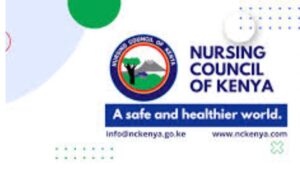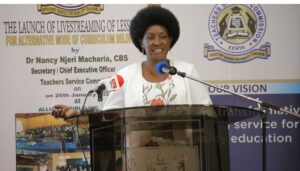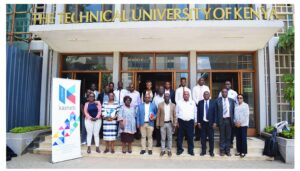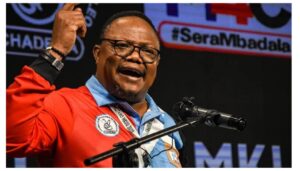Ruto vows big revenue boost as he roots for a 8000-kilometer highway connecting Mombasa and west Africa

Ruto vows big revenue boost and budget cuts in a bid to avoid the economic crises
Ruto vows big revenue boost and budget cuts in a bid to avoid the economic crises.
In an effort to prevent economic catastrophes like those that hit emerging and frontier markets this year, President William Ruto said he has devised a plan to urgently restore the country’s budgetary position.
In an interview given on Friday in Washington, DC, where he was attending the US-Africa Leaders Summit, Ruto stated his goal to nearly treble yearly tax collections to 5 trillion shillings ($40.6 billion) in five years.
The overall goal is to lessen the financial burden on a country that, according to the International Monetary Fund, is at a high risk of financial distress and currently spends more than half of its tax revenue on debt payment.
“I am very confident that our debt situation is going to change significantly because we have begun to make the right decisions,” Ruto said.
In addition, Ruto intends to digitize the provision of all government services in order to ease revenue collection and close spending leakages.
Ruto makes a U-turn on SGR, Naivasha Port in reverting of port operations to Mombasa
Kenya seeking China loan to extend SGR to Malaba
Deals President Ruto has already secured in the US
He reiterated a plan to cut the 2022-23 budget by about $3 billion, partly by halting some fuel and food subsidies.
The measures could help Kenya achieve a target of raising its tax revenue to 25% of the gross domestic product from 15% in the fiscal year that ended in June.
The urgency for fiscal consolidation in Kenya was renewed on Dec. 14 when Fitch Ratings downgraded the nation’s credit rating to B from B+ because its high debt and increase in borrowing costs limits access to global markets.
Kenya’s dollar debt, including a $2 billion Eurobond maturing in June 2024, could add pressure to its foreign reserves, according to Fitch.
The government has signed up to a $2.34 billion IMF program to help reduce debt risks.
Ruto met with company executives in the US as he looks to boost private capital inflows to ensure the economy continues to grow and create jobs.
He asked investors to support his plans to deliver 200,000 affordable housing units annually and build water dams in projects he said promised returns and employment.
Meanwhile, Ruto also said that regional leaders are discussing a plan to develop an 800-kilometer highway connecting the Kenyan port of Mombasa on the Indian Ocean coastline and the Atlantic Ocean in west Africa, as part of plans to facilitate intra-Africa trade.
Raila Odinga, who is the special envoy to the African Union-High Representative for Infrastructure Development in Africa announced the plan for a new transport connection between Mombasa and Lagos.
The route would provide an important economic link between two of Africa’s main ports.
The project would include far more road connections than the single route connecting the two ports and would in fact account for a total of 60,000km of new road links.
This plan would form part of the Trans-African Highway project, first mooted as far back as 1971. It would also include the construction of new railway connections across the continent.
When the Trans-Africa Highway plan was proposed in 1971, it envisaged nine new highways across the continent. To date, only the 4,500km route connecting Dakar and N’Djamena in Chad has been completed.
And in addition to the 6,000km highway between Mombasa and Lagos would be an 8,000km route from Dakar in Senegal to Cairo in Egypt, as well as a 4,700km route between Dakar and Lagos.
Also read,
Parliament opposes TSC’s pro-rata teacher recruitment method
Government explains Inua Jamii funding delay after complaints from the elderly
Ruto inducted into the American Academy of Achievement, joining Barack Obama, the late Desmond Tutu
Follow us




